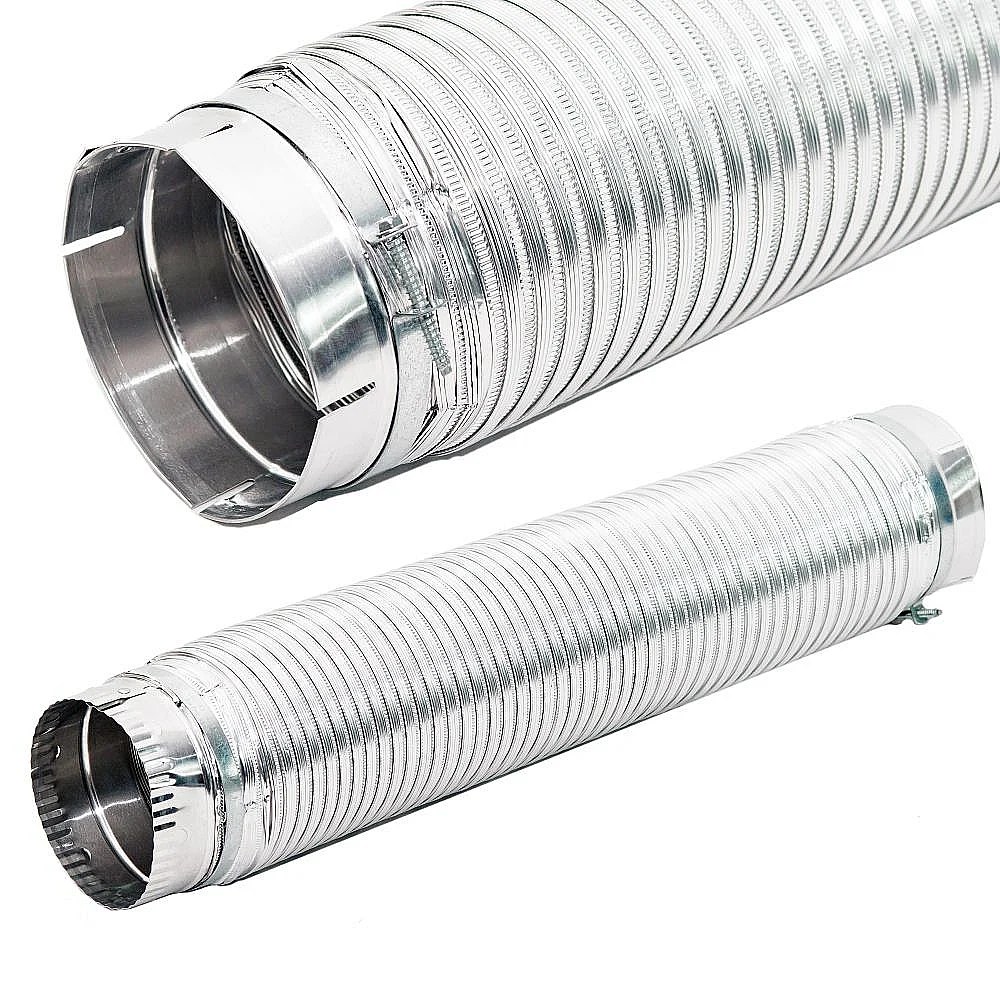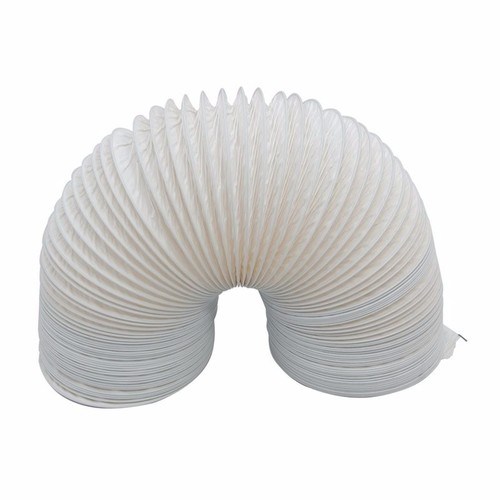Taming the Laundry Beast: The Ultimate Guide to Flexible Dryer Vents
Is your laundry room a hotbed of lint, inefficiency, and potential fire hazards? The unsung hero of laundry operations, the dryer vent, often gets overlooked until disaster strikes. And while rigid metal ducts have long been the standard, the flexible dryer vent has emerged as a popular alternative, offering a degree of maneuverability unmatched by its rigid counterpart. But is this flexible friend truly a laundry lifesaver, or a disaster waiting to happen?
The flexible dryer vent, also known as a foil dryer vent or transition duct, is a corrugated tube typically made of aluminum foil or plastic. It connects your dryer to the exhaust duct, allowing hot, moist air and lint to escape outdoors. This seemingly simple conduit plays a crucial role in dryer efficiency, energy consumption, and, most importantly, fire safety.
Historically, dryer vents were primarily rigid metal ducts. Flexible dryer vent options became more prevalent in the latter half of the 20th century due to their ease of installation, particularly in tight spaces. This flexibility made them appealing for DIY installations and renovations. However, the early iterations of flexible dryer vents presented safety concerns, primarily due to their propensity for lint accumulation and restriction of airflow. This led to longer drying times, increased energy consumption, and, in worst-case scenarios, fires.
The importance of a properly functioning dryer venting system cannot be overstated. It's the key to efficient drying, lower energy bills, and a safe laundry environment. A compromised vent, whether flexible or rigid, can lead to a host of problems, from sluggish drying performance and increased energy costs to a buildup of flammable lint, posing a serious fire risk.
Understanding the nuances of flexible dryer vents—their benefits, drawbacks, and best practices—is crucial for ensuring optimal dryer performance and safeguarding your home. Let's delve into the details of this essential laundry component.
Benefits of using a flexible dryer vent include ease of installation, especially in confined spaces, adaptability to existing ductwork, and affordability compared to rigid metal ducts. For instance, navigating around obstacles like pipes or beams becomes easier with a flexible duct. Additionally, replacing a damaged section of a flexible vent is generally simpler than replacing a rigid duct segment.
Before installing a flexible dryer exhaust vent, measure the required length and choose a vent that meets the dryer manufacturer's recommendations. Ensure the vent path is as straight and short as possible. Avoid sharp bends and kinks, which can restrict airflow. Secure the vent with clamps at both ends and at any connection points.
Advantages and Disadvantages of Flexible Dryer Vents
| Advantages | Disadvantages |
|---|---|
| Easy Installation | Prone to Lint Buildup |
| Flexibility in Tight Spaces | Can Sag and Restrict Airflow |
| Cost-Effective | Potential Fire Hazard if Not Maintained |
Best Practices for Flexible Dryer Vent Installation: 1. Keep it Short and Straight: Minimize length and avoid sharp bends. 2. Use Metal Foil Tape, Not Duct Tape: Secure connections with metal foil tape, which is heat resistant. 3. Regular Cleaning is Crucial: Clean the vent regularly to prevent lint buildup. 4. Avoid Crushing or Compressing the Vent: Ensure it maintains its circular shape for proper airflow. 5. Replace Damaged Vents Promptly: Any signs of damage warrant immediate replacement.
Challenges and Solutions: 1. Kinks: Solution: Straighten the vent or replace kinked sections. 2. Lint Buildup: Solution: Regularly clean the vent with a brush or vacuum. 3. Sagging: Solution: Support the vent with straps or hangers. 4. Damaged Vent: Solution: Replace the damaged section or the entire vent. 5. Improper Installation: Solution: Consult a professional for proper installation.
FAQs: 1. How often should I clean my flexible dryer vent? At least once a year. 2. Can I use duct tape on my flexible dryer vent? No, use metal foil tape. 3. What is the maximum length for a flexible dryer vent? Consult your dryer's manual. 4. What are the signs of a clogged dryer vent? Long drying times, excessive heat, and a burning smell. 5. Are plastic flexible dryer vents safe? Metal foil vents are generally recommended for safety. 6. How do I know if my flexible dryer vent needs replacing? Check for damage, kinks, and excessive lint buildup. 7. Can I install a flexible dryer vent myself? Yes, but consult your dryer's manual and follow best practices. 8. How can I prevent lint buildup in my flexible dryer vent? Regular cleaning and ensuring proper airflow.
Tips and Tricks: Use a dryer vent cleaning kit for efficient cleaning. Check your vent regularly for any signs of damage. Ensure your vent is properly supported to prevent sagging.
In conclusion, the flexible dryer vent, despite some inherent challenges, offers a practical solution for venting dryers, especially in situations where space is limited. By understanding the importance of proper installation, regular maintenance, and adherence to best practices, you can harness the benefits of flexible dryer vents while mitigating the risks. Maintaining a clean and efficient dryer vent not only optimizes drying performance and saves energy but also significantly reduces the risk of fire, ensuring a safe and efficient laundry experience for years to come. Don’t overlook this critical component of your laundry setup—a little attention to your flexible dryer vent can go a long way in preventing potential disasters and keeping your laundry room running smoothly. Take action now, inspect your dryer vent, and ensure it's up to the task of keeping your home safe and your clothes dry.
Punching bags speed bags your ultimate guide to buying the best
Decoding fedex ship center access nearby locations hours
Seeking opportunity explore skip the dishes employment














